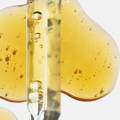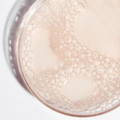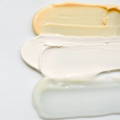Skin Streaming
WHAT IS SKIN STREAMING, & WHY MIGHT IT BE WORTH TRYING?

As we are slowly getting the hang of things (finally!) in 2024, we’re seeing more and more trends take form, and you may have come across one in particular: skin streaming.
Starting back in 2023, skin streaming has become more prevalent in skincare as time goes on, and given its convenience and time-saving nature, we can totally see why! Haven’t heard of it? No worries! Scroll on to break it down and discover how you can try it out for yourself!
What is skin streaming?
Skin streaming is a relatively new concept in the skincare and beauty world, gaining more traction in 2023. As the name suggests, it’s all about “streamlining” your skincare routine to only 3 or 4 steps total by using more multi-active or multi-beneficial formulas.
Does it work?
Science has shown that the skin is more likely to better absorb and make the best use out of ingredients with fewer layers, so, in theory, yes! Additionally, skin streaming can minimize your risk of mixing incompatible ingredients, which can cause irritation to the skin.
How to start doing it:
To effectively simplify your routine, it’s best to think about two things: 1) your skin type/concerns and 2) the typical steps of a basic skincare routine (i.e. cleanser, serum, moisturizer, SPF).
Focus on ingredients:
Depending on your skin concerns and skin type, you can begin to make your skincare more targeted by opting for ingredients that are tailored to your goals. Here are a couple common evidence-based skincare ingredients and their purposes:

AHAs (alpha-hydroxy acids):
Alpha-hydroxy acids are plant- and animal-derived acids, and are most commonly found in skincare as glycolic acid or lactic acid. They have been well-tested and found to cause less irritation compared to other forms of AHAs. They gently exfoliate with a chemical action, which can have multiple effects on the skin, including:
- Fading marks, scars & dark spots
- Minimizing the appearance of lines & wrinkles
- Stimulating collagen & circulation
- Preventing breakouts & clearing existing blemishes
- Improving radiance

Vitamin C:
This antioxidant ingredient has made a buzz in the skincare world for quite some time now, and thanks to its generally well-tolerated interaction with the skin, it has been shown to improve texture and tone through these benefits:
- Helps hydrate the skin
- Reduces redness
- Boosts collagen production
- Fades dark spots
- May protect against sun damage

Retinol:
Derived from Vitamin A, this ingredient has been making waves in the skincare world for the past decade or so, particularly when it comes to signs of aging. It offers antioxidant protection to the skin which can have a number of effects:
- Reduces fine lines & wrinkles
- Shrinks pores
- Improves skin texture
- Fades hyperpigmentations
However, it is important to note that Retinol can also be irritating to the skin and may lead to itching, redness and discomfort. It’s recommended to gradually incorporate it into your routine for this reason, and if you’re not sure how to use it, you should consult your dermatologist.

Niacinamide:
Also known as Vitamin B3, this molecule is an essential ingredient for cell function and overall health. It is generally well-tolerated by the skin and has several benefits:
- Helps soothe redness/rosacea
- Reinforces the skin barrier
- Minimizes inflammation & acne
- May protect against sun damage

Hyaluronic Acid:
This molecule has made its mark on the beauty industry in a big way for quite some time now, where we’re even seeing it available in hair care ranges, makeup, and other beauty products. Our body naturally produces Hyaluronic Acid for various biological functions, such as maintaining hydration, lubricating joints, and serving as a medium for cellular migration.
Due to its low molecular weight that allows it to penetrate more deeply into the skin and its ability to bind to water up to 1000 times its weight, more research has been done with its connection to skin health and signs of aging. Let’s look at some of its effects:
- Improves wound healing
- Boosts elasticity
- Soothes eczema and redness
- Increases hydration
- Smooths wrinkles

Emollients:
Rich in lipids, emollients are agents that soften and soothe the skin. They coat the skin with an oily film to help seal in moisture and protect against aggressors. Emollients can be found in ointments, creams and lotions, and can have several benefits:
- Repair dry, cracked skin
- Restore softness and hydration
- Protect against harsh conditions
- Soothe irritation and redness
Start with the basics
When thinking about your routine, it’s good to not only consider your skin type and concerns, but also to think about the basic steps of your routine. A simplified routine would look something like the following:
- A multi-active cleanser
- One to two targeted serums
- Targeted eye cream
- Moisturizer
- Sunscreen (for daytime)
Since the point of skin streaming is to limit the number of products and steps in your skincare routine, looking at each step and how it can have multiple benefits on your skin through its ingredients and properties can help you to pare back your existing routine or completely change it up!
Armed with your new routine, you can reap the maximum benefits while making it easier to stick to a consistent regimen for your skin and saving time! What’s not to love?
However, remember to always consult with a professional about any serious skin concerns or if you don’t know where to begin. A licensed dermatologist can help you assess your skin type and goals and recommend the best, customized course of action without risking potentialcomplications.





